
Jean Baudrillard, a French philosopher, introduced the concept of simulacra and simulation, exploring how representations replace reality in hyperreal worlds, influencing modern thought on media and technology․
1․1․ Who is Jean Baudrillard?
Jean Baudrillard was a French sociologist and philosopher, born in 1929 and deceased in 2007․ Known for his critical theories on modernity, postmodernity, and consumer culture, he gained prominence with his work Simulacra and Simulation․ Baudrillard’s ideas explored how societies substitute representations of reality for reality itself, creating hyperreal experiences․ His theories significantly influenced postmodern thought, cultural studies, and media theory․ Baudrillard’s work remains a cornerstone for understanding the effects of technology and media on contemporary society, offering insights into the blurring of reality and simulation;
1․2․ The Concept of Simulacra and Simulation: A Brief Overview
Jean Baudrillard’s theory of simulacra and simulation posits that society has moved beyond representing reality to creating simulations of it․ Simulacra are copies without an original, leading to a hyperreal world where symbols and images replace authentic experiences․ Baudrillard argues that modern media and technology perpetuate this hyperreality, making it difficult to distinguish between the real and the simulated․ His concept outlines four stages of simulation, from faithful representations to pure models with no connection to reality․ This idea critiques how contemporary culture is dominated by artificial constructs, shaping perceptions and interactions․

Core Concepts in Simulacra and Simulation
Baudrillard’s theory introduces simulacra as copies without originals and simulation as models of reality․ It explores hyperreality, where symbols and images dominate, and the precession of simulacra․
2․1․ Definition of Simulacra
Jean Baudrillard defines simulacra as copies or representations that lack an original, functioning as models of reality without a true referent․ These simulacra create hyperreality, where symbols and images replace authentic experiences․ Unlike traditional concepts of imitation, simulacra are not tied to a real-world counterpart; instead, they exist independently, often masking the absence of truth․ In Baudrillard’s framework, simulacra are central to understanding how modern societies construct meaning, as they shape perceptions and interactions, blurring the line between the real and the simulated․
2․2․ The Idea of Hyperreality
Jean Baudrillard’s concept of hyperreality refers to a state where simulations and models of reality replace the actual world, creating a system where the distinction between reality and illusion dissolves․ Hyperreality is characterized by the dominance of symbols, images, and representations that lack a direct connection to truth or an original referent․ It is a realm where media, technology, and consumer culture construct perceived reality, making it more influential than the tangible world․ Baudrillard argues that hyperreality shapes human experiences, perceptions, and interactions, often masking the absence of authenticity in modern society․
2․3․ The Precession of Simulacra
The precession of simulacra, a key concept in Baudrillard’s theory, describes how simulacra (copies without originals) precede and shape reality itself․ It suggests that models, symbols, and representations determine our understanding of the world, rather than the world shaping these models․ This reversal creates a hyperreal world where simulations are more influential than reality․ Baudrillard argues that society has become detached from the actual world, engaging instead with representations that mask the absence of an underlying truth․ This concept underscores how media and technology perpetuate hyperreality, making simulations indistinguishable from reality․

The Structure of Baudrillard’s “Simulacra and Simulation” PDF
Baudrillard’s “Simulacra and Simulation” PDF is structured into key chapters, including “The Precession of Simulacra” and “History: A Retro Scenario,” exploring hyperreality and simulation’s impact on society․
3․1․ Table of Contents: Key Chapters
Baudrillard’s Simulacra and Simulation PDF features a structured table of contents with pivotal chapters․ Key sections include The Precession of Simulacra, which introduces the concept of simulacra overtaking reality, and History: A Retro Scenario, exploring history as a simulation․ Other chapters like Holocaust, The China Syndrome, and Apocalypse Now analyze specific cultural and historical events through the lens of hyperreality․ These chapters collectively outline Baudrillard’s theory, providing a comprehensive framework for understanding simulation’s role in contemporary society․
3․2․ The Significance of Each Chapter
Each chapter in Baudrillard’s Simulacra and Simulation PDF holds distinct significance․ The Precession of Simulacra lays the groundwork for understanding how simulacra precede and shape reality․ History: A Retro Scenario reexamines historical narratives as simulations․ Chapters like Holocaust and The China Syndrome provide critical analyses of events through the hyperreal lens․ Apocalypse Now reflects on media’s role in shaping perceptions․ Together, these chapters offer a nuanced exploration of hyperreality, making the book a foundational text for understanding contemporary culture and media․
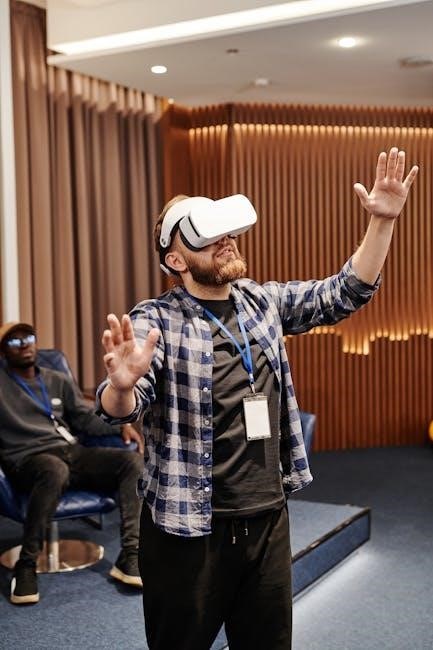
The Role of Media and Technology in Simulacra and Simulation
Media and technology in Baudrillard’s theory create hyperreality, where simulations of reality replace the real, profoundly influencing contemporary culture and perception․
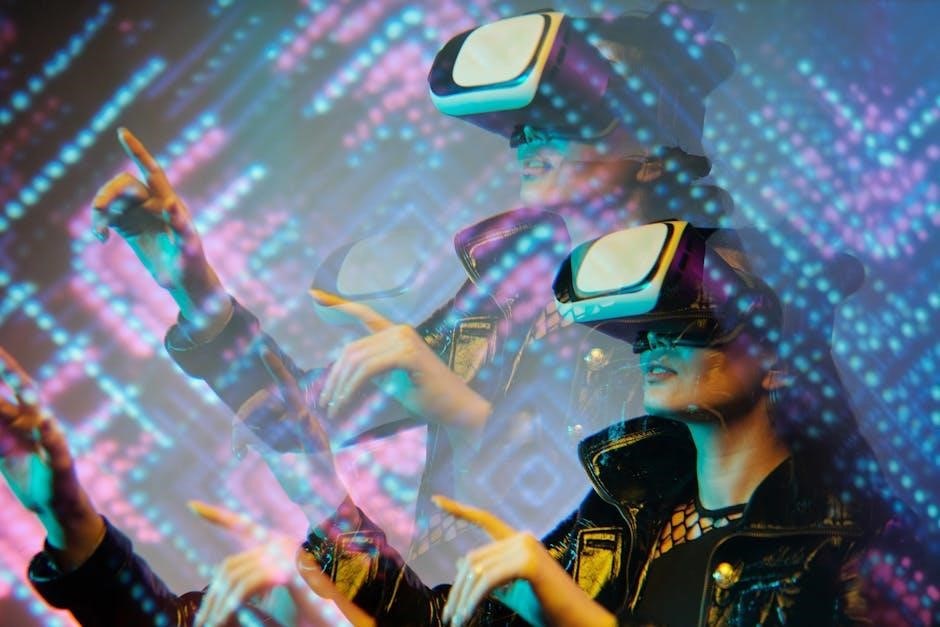
4․1․ Mass Media and the Creation of Hyperreality
Mechanic reproduction through media generates hyperreality, blurring the distinction between reality and its representation․ Baudrillard posits that mass media propagates simulacra, creating a world where images and symbols replace authentic experiences․ Digital technologies amplify this process, enabling the widespread dissemination of hyperreal constructs․ Media constructs truth through selective narratives, reducing complex phenomena to simplistic simulations․ This proliferation of hyperreality fosters a society detached from tangible reality, where media-driven simulations shape perceptions and beliefs․ Baudrillard argues that media’s role in creating hyperreality is central to understanding contemporary culture and its relationship with technology․
4․2․ The Impact of Digital Technologies on Simulation
Digital technologies significantly intensify Baudrillard’s notion of simulation, creating immersive hyperreal environments․ Social media, algorithms, and virtual realities generate layered simulacra, further disconnecting individuals from tangible reality․ These technologies enable instant reproduction and dissemination of images, accelerating the proliferation of hyperreality․ Digital platforms create echo chambers that reinforce simulated truths, making it increasingly difficult to distinguish genuine experiences from constructed ones․ Baudrillard’s theory underscores how digital advancements amplify simulation, fostering a world where the virtual surpasses the real in influence and perception, profoundly shaping contemporary culture and interaction․ This digital evolution embodies the essence of Baudrillard’s hyperreality concept․
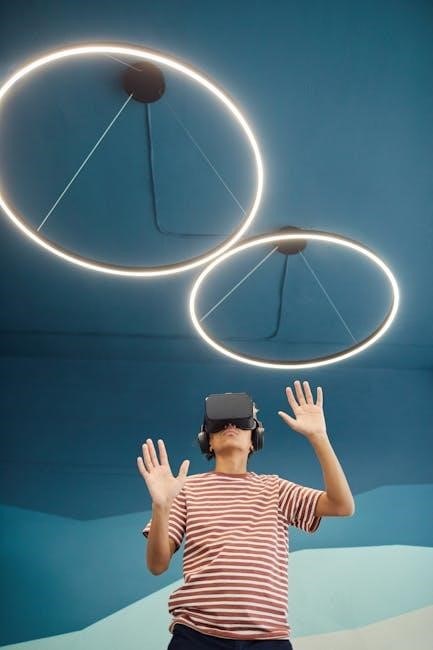
Case Studies and Examples from Popular Culture
Films like The Matrix and Inception illustrate hyperreality, while social media and advertising create simulated identities, reflecting Baudrillard’s concepts in modern culture․
5․1․ Simulacra in Film and Television
Films like Westworld and The Truman Show explore simulacra, depicting worlds where reality is replaced by constructed simulations․ These narratives reflect Baudrillard’s concept of hyperreality, where simulations mask the absence of an underlying truth․ Television series such as Black Mirror further illustrate how technology creates immersive, hyperreal environments that blur the lines between the real and the simulated․ These cultural products exemplify Baudrillard’s theory, showing how media and technology shape perceptions of reality, often replacing it entirely with fabricated versions that feel more real than reality itself․
5․2․ Hyperreality in Advertising and Consumer Culture
Advertising and consumer culture thrive on hyperreality, creating idealized images that mask the absence of real meaning․ Brands craft simulations of lifestyles, often disconnected from actual experiences, to evoke desire․ Digital technologies amplify this, turning products into symbols of status or happiness․ Baudrillard’s theory highlights how consumer culture replaces authentic needs with simulated wants, fostering a world where the symbolic value of goods surpasses their practical use․ This hyperreal construct shapes identity and consumption patterns, reflecting the broader societal shift toward valuing appearances over substance․
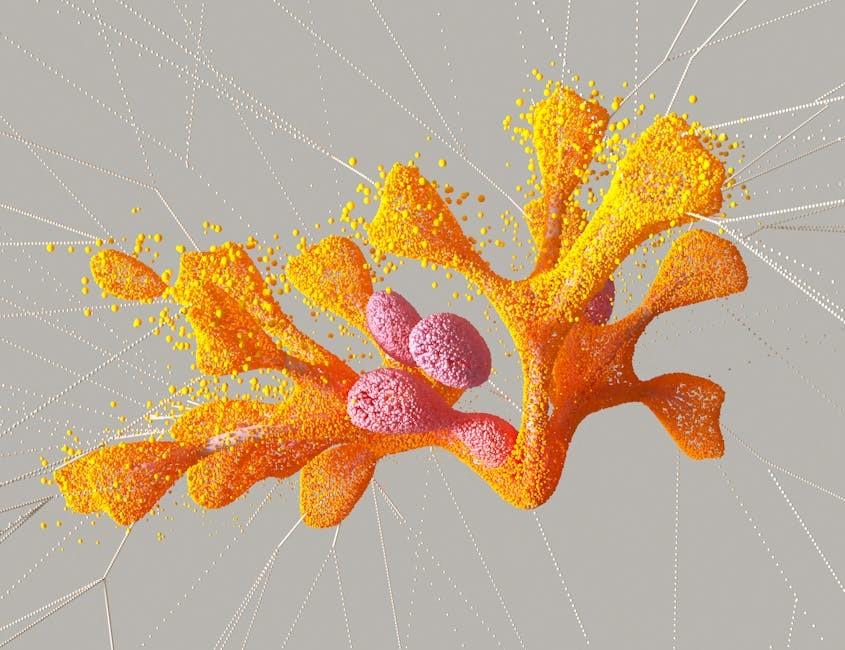
Criticisms and Controversies Surrounding Baudrillard’s Theory
Baudrillard’s theory has faced criticism for its abstract nature and lack of empirical grounding․ Some argue it oversimplifies complex social dynamics, lacking practical applications․
6․1․ Academic Critiques of Simulacra and Simulation
Baudrillard’s theory has been criticized for its abstract and philosophical nature, often lacking empirical support․ Academics argue it oversimplifies complex social dynamics, reducing them to mere simulations․ Some scholars, particularly sociologists, claim the theory lacks practical applications and fails to provide a clear methodology for analysis․ Additionally, critics contend that Baudrillard’s ideas are more speculative than substantive, making them difficult to test or validate․ Despite these criticisms, the theory remains influential in postmodern thought, sparking debates about reality, media, and culture in contemporary society․
6․2․ Misinterpretations of Baudrillard’s Ideas
Baudrillard’s concepts are often misinterpreted as dismissing reality entirely, but he emphasizes that hyperreality and simulacra coexist with, rather than replace, the real․ Critics argue his ideas are oversimplified, particularly in popular culture, where his theory is reduced to catchy but misleading phrases like “more real than reality․” Additionally, his critique of media and technology is sometimes misread as a total rejection, rather than a nuanced analysis of their role in shaping perceptions․ These misinterpretations overshadow the depth of his philosophical inquiry into how society engages with simulations and constructed realities․
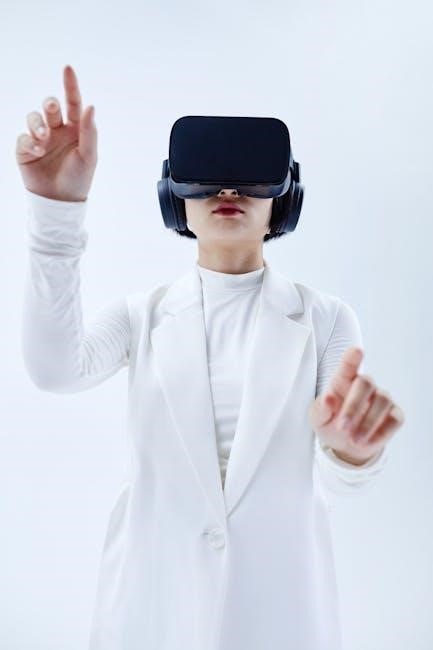
The Relevance of Simulacra and Simulation in the Modern World
Baudrillard’s theory remains highly relevant today, as digital technologies and social media amplify hyperreality, creating worlds where simulations often overshadow tangible experiences and authentic interactions․
7․1․ Applying Baudrillard’s Theory to Contemporary Society
In today’s digital age, Baudrillard’s concepts of simulacra and hyperreality are increasingly relevant․ Social media platforms, for instance, create curated identities that often replace authentic human experiences․ The proliferation of deepfakes, virtual influencers, and AI-generated content further illustrates how simulations dominate modern life․ Baudrillard’s ideas help us understand how technology mediates reality, leading to a world where the distinction between the real and the simulated becomes increasingly blurred․ This framework is essential for analyzing the cultural and societal shifts driven by digital technologies and hyperreality․
7․2․ The Future of Hyperreality in a Post-Truth World
The future of hyperreality in a post-truth world promises even greater blurring of reality and simulation․ Technologies like AI and virtual reality will deepen the illusion, making it harder to distinguish fact from fiction․ Baudrillard’s theory predicts a world where simulations replace authentic experiences, leading to a society detached from tangible reality․ This shift could erode trust in institutions and amplify misinformation․ As hyperreality evolves, understanding Baudrillard’s concepts becomes crucial for navigating a world where truth is increasingly contested and reality is shaped by simulations․
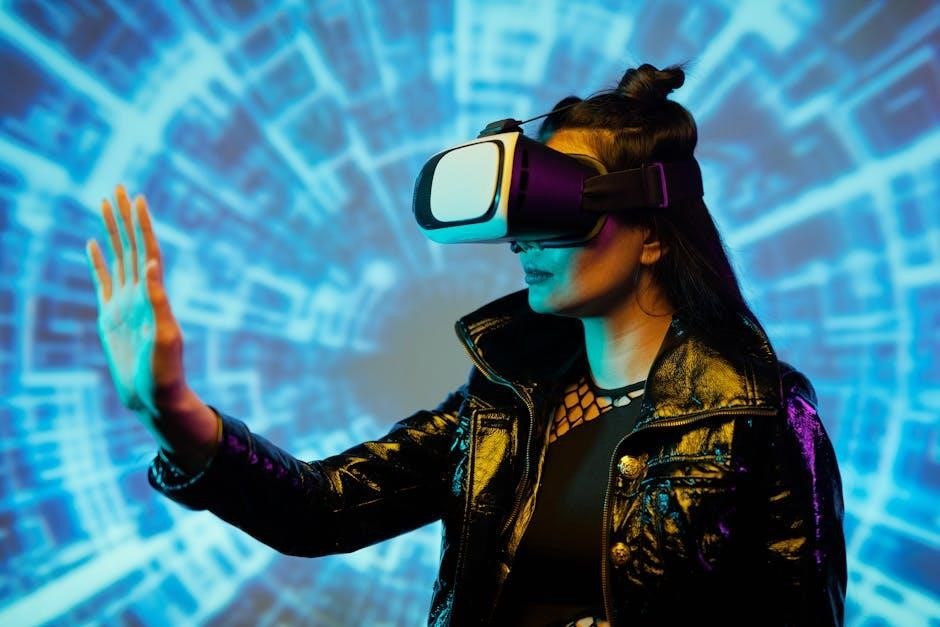
How to Access and Understand the Simulacra and Simulation PDF
The Simulacra and Simulation PDF can be accessed through academic databases or online archives․ Reading it requires critical analysis of Baudrillard’s concepts and their relevance to modern society․
8․1․ Where to Find the PDF Version of the Book
The PDF version of Simulacra and Simulation can be accessed through various academic databases, online archives, and educational platforms․ It is also available on websites offering free academic resources, such as university repositories or open-access libraries․ Additionally, the book can be downloaded from platforms like GitHub or purchased as an e-book through major publishers․ Some translations, including Russian versions, are available online, making Baudrillard’s work widely accessible for global readers․ Ensure to use reputable sources to download the PDF legally and safely․
8․2․ Tips for Reading and Analyzing the Text
Reading Simulacra and Simulation requires careful attention to Baudrillard’s complex philosophical language․ Start by familiarizing yourself with key concepts like simulacra, hyperreality, and precession․ Break down dense passages and take notes to unpack his arguments․ Contextualize the theories within contemporary culture and technology to better understand their relevance․ Engage with secondary sources or critiques to deepen your analysis․ Be patient, as the text challenges traditional notions of reality and representation․ Re-reading sections and cross-referencing ideas with other philosophers can enhance comprehension and provide a richer understanding of Baudrillard’s postmodern insights․
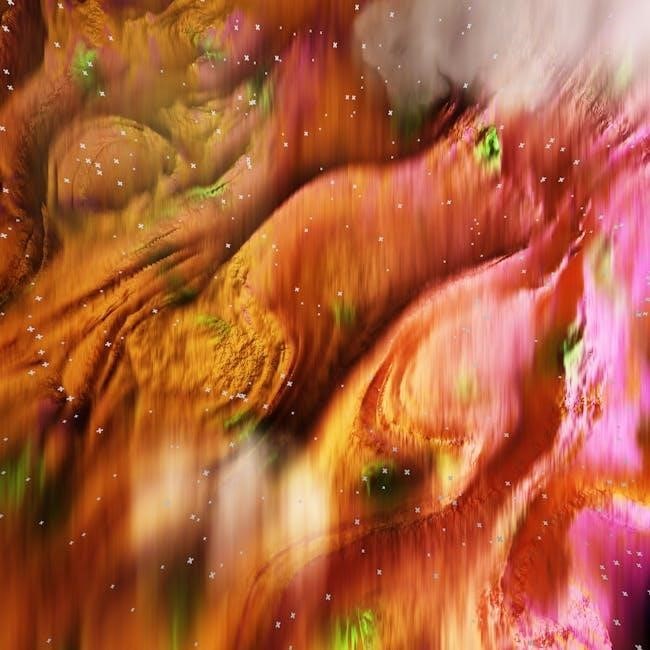
The Influence of Simulacra and Simulation on Other Theorists
Baudrillard’s theory has profoundly influenced postmodern thought, inspiring scholars like Foucault and shaping cultural theory, while connecting to works by Debord and other critical thinkers․
9․1․ Baudrillard’s Impact on Postmodern Thought
Jean Baudrillard’s theory of simulacra and simulation significantly shaped postmodern thought, challenging traditional notions of reality and truth․ His ideas about hyperreality and the precession of simulacra resonated with scholars like Michel Foucault, influencing cultural and media studies․ Baudrillard’s critique of representation and his assertion that simulations replace the real aligned with postmodern skepticism toward grand narratives․ His work inspired new perspectives on consumer culture, digital technologies, and the mediation of experience, solidifying his role as a key figure in postmodern philosophy․ Baudrillard’s concepts remain central to understanding contemporary society’s relationship with technology and media․
9․2․ Connections to Other Philosophers and Theorists
Jean Baudrillard’s ideas on simulacra and simulation resonate with other influential thinkers․ Guy Debord’s concept of the “society of the spectacle” aligns with Baudrillard’s hyperreality, where images dominate reality․ Michel Foucault’s critiques of power and representation also parallel Baudrillard’s notions of simulation․ Additionally, Baudrillard’s work intersects with Marshall McLuhan’s theories on media’s role in shaping culture․ While Baudrillard’s ideas are distinct, they build on and contrast with these thinkers, offering a unique perspective on how reality is constructed and perceived in a mediated world․
Jean Baudrillard’s Simulacra and Simulation remains a profound analysis of hyperreality, offering insights into media, technology, and consumer culture․ Its influence endures, shaping postmodern thought and critique․
10․1․ The Importance of Baudrillard’s Work Today
Jean Baudrillard’s theories on simulacra and hyperreality remain highly relevant in today’s digital age․ His ideas about the blurring of reality and simulation resonate deeply with contemporary issues like social media, virtual reality, and AI․ Baudrillard’s work challenges us to critically analyze how technology shapes our perceptions, offering a framework to understand the pervasive influence of media and consumer culture․ His concepts continue to inspire new generations of scholars and thinkers, making his work a cornerstone of postmodern thought and cultural critique in the 21st century․
10․2․ Final Thoughts on the Simulacra and Simulation PDF
Jean Baudrillard’s Simulacra and Simulation remains a groundbreaking text that challenges readers to rethink reality and its representations․ The PDF version of the book offers unparalleled accessibility, allowing global audiences to engage with Baudrillard’s profound ideas․ As a foundational work of postmodern theory, it continues to inspire critical thinking about media, technology, and culture․ Its insights into hyperreality and simulacra are more relevant today than ever, making it an essential read for anyone exploring the complexities of our increasingly virtual world․ The PDF format ensures Baudrillard’s legacy endures, offering a timeless critique of modern society․